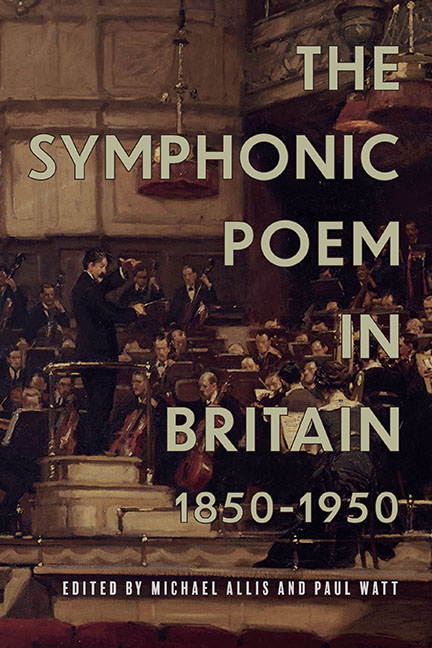8 - Symphonic Poetry, 1914: Parry’s From Death To Life
Published online by Cambridge University Press: 23 October 2020
Summary
FROM Death to Life (1914) is Parry's last major orchestral work and the only such example designated by him as a symphonic poem. Moreover, this piece is decidedly unusual for the genre in consisting of not one but two movements, interconnected by the thematic recall of the first (‘Via Mortis’) in the second (‘Via Vitae’). Parry was not generally drawn towards the Lisztian model of the symphonic poem or its later Straussian development, and at face value From Death to Life might appear anomalous within his oeuvre in suggesting an affiliation with programme music rather than the more traditional genres with which he had primarily been concerned, most evidently the post-Brahmsian symphony. Such a clear-cut distinction between programmatic and absolute music, unsurprisingly, proves on closer investigation to be anything but watertight, for the composer's preceding symphonies had already been heading in this less abstract direction, as exemplified in the quasi-programmatic titles affixed to the revised version of the Fourth Symphony (1910; original 1889), or the four-movements-in-one design of the equally programmatically suggestive Fifth Symphony (Symphonic Fantasia ‘1912’). Indeed, throughout his career Parry had set himself the task of conveying the ethical character he saw as crucial to art, and this late symphonic diptych might equally be seen as the convergence of his symphonic writing with the broader philosophical concerns highlighted by his series of ‘ethical cantatas’ from the preceding decade. Written in the opening months of the First World War, the expressive import of the work may obviously be related to the European conflict that was just beginning, but this piece further provides rich ground for investigating the broader aesthetic relation between more abstract formal values and questions of expressive meaning.
From Death to Life in fact offers an ideal opportunity to explore a cluster of important themes in Parry's musical aesthetics, the history of the genre, and the relation of formal analysis to programmatic hermeneutics. This chapter explores some of the contexts for the work and investigates its musical text and verbal paratexts within these frames of reference. It examines the generic relationship of the two-movement design to earlier compositions, the purported expressive content of the work and how this interacts with the musical structure.
- Type
- Chapter
- Information
- The Symphonic Poem in Britain, 1850–1950 , pp. 245 - 277Publisher: Boydell & BrewerPrint publication year: 2020



